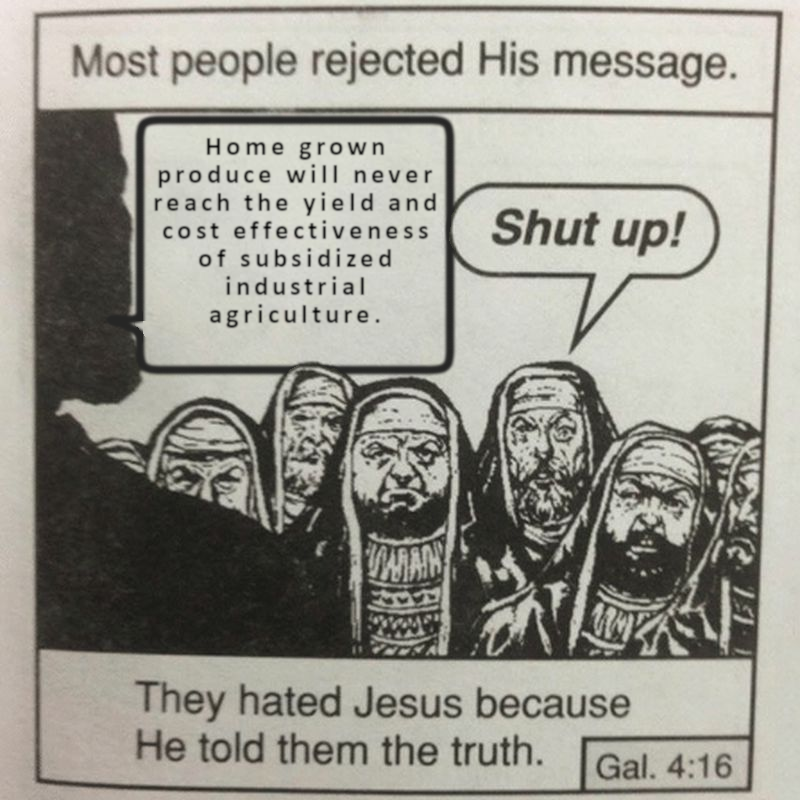this post was submitted on 13 May 2024
792 points (91.9% liked)
Science Memes
15429 readers
1478 users here now
Welcome to c/science_memes @ Mander.xyz!
A place for majestic STEMLORD peacocking, as well as memes about the realities of working in a lab.

Rules
- Don't throw mud. Behave like an intellectual and remember the human.
- Keep it rooted (on topic).
- No spam.
- Infographics welcome, get schooled.
This is a science community. We use the Dawkins definition of meme.
Research Committee
Other Mander Communities
Science and Research
Biology and Life Sciences
- !abiogenesis@mander.xyz
- !animal-behavior@mander.xyz
- !anthropology@mander.xyz
- !arachnology@mander.xyz
- !balconygardening@slrpnk.net
- !biodiversity@mander.xyz
- !biology@mander.xyz
- !biophysics@mander.xyz
- !botany@mander.xyz
- !ecology@mander.xyz
- !entomology@mander.xyz
- !fermentation@mander.xyz
- !herpetology@mander.xyz
- !houseplants@mander.xyz
- !medicine@mander.xyz
- !microscopy@mander.xyz
- !mycology@mander.xyz
- !nudibranchs@mander.xyz
- !nutrition@mander.xyz
- !palaeoecology@mander.xyz
- !palaeontology@mander.xyz
- !photosynthesis@mander.xyz
- !plantid@mander.xyz
- !plants@mander.xyz
- !reptiles and amphibians@mander.xyz
Physical Sciences
- !astronomy@mander.xyz
- !chemistry@mander.xyz
- !earthscience@mander.xyz
- !geography@mander.xyz
- !geospatial@mander.xyz
- !nuclear@mander.xyz
- !physics@mander.xyz
- !quantum-computing@mander.xyz
- !spectroscopy@mander.xyz
Humanities and Social Sciences
Practical and Applied Sciences
- !exercise-and sports-science@mander.xyz
- !gardening@mander.xyz
- !self sufficiency@mander.xyz
- !soilscience@slrpnk.net
- !terrariums@mander.xyz
- !timelapse@mander.xyz
Memes
Miscellaneous
founded 2 years ago
MODERATORS
you are viewing a single comment's thread
view the rest of the comments
view the rest of the comments

Uh oh.
Well I'll just mention one thing... just. one. thing. Ok, no, let me do my top beginner mistakes, which seem to all be not understanding what plants need.
Thank you, that was interesting. I would like to subscribe to your newsletter 🙂
But I am not sure I understand point 2. Are you talking about seeds?
People buy or grow "starts" - little baby plants in pots - and often don't let them adjust to being outside before sticking them in the ground.
Ah, gotcha, thanksñ
What are the solutions to #4? Had that problem this year. Something killed about a 1/4 of my tomato and pepper starts because they were still really small when it was time to plant them outdoors (guessing snails or cutworms; I have a lot of both).
Cutworms and similar (I have armyworms) are very annoying. Standard advice is tilling and keeping things clear of weeds but that has the effect of removing habitat for beneficials. My approach is mechanical removal, which I've found very effective: go out when said critters are active, usually at night, and pick them off. It's labor intensive but you only need to do it 1-2 times. For many worms, they'll bury themselves just under the soil surface during the day so if you lightly till with a hand trowl or something in about a 4-6" circle around the plant you can often find them. I also just over-plant, expecting to lose some - we also have gophers here who take about a 10% tythe on nearly everything. Some folks use cardboard collars around the base of peppers and tomatoes but I didn't find that effective and it was a pain.
Obviously the bigger and stronger the plants are the greater the more damage they can take and still survive. Often really small solanaceae are still susceptible to damping off (too much moisture) or may just not be big enough to withstand the shock of transplanting.
So... a cheap and very effective solution to the "living room window" problem is a mini greenhouse or cold frame of some kind, if you have the space. The idea being to give your starts a more ideal growing environment to strengthen them as much as possible before going in the ground.
Even just a simple 2'x4' cold frame made from scrap wood and recycled glass or plexiglass (or better, double walled greenhouse panels) can help the starts make the transition better. You can still start things inside when it's too cold and be careful to move them around to get maximum sun, but then move it to the cold frame as soon as night time temperatures support it and then let the starts mature in there - they will do much better in the heat and light. I use a passive solar greenhouse made from an old Costco barn frame and covered in proper greenhouse plastic (about $130). I have these dark grey barrels (55 gallon food grade barrels used by factories to hold things like syrups - $15 each) that are filled with water and heat up during the day. This provides enough thermal mass that I can start things even when daytime highs are in the 30s. You can replicate this on a smaller scale in a cold frame with even just a few gallons of water.
Other options include season extension methods like row covers (Remay or Agribon). The idea being to even out temperature extremes as much as to protect from frost. A simple hoop made from metal conduit will last way longer than PVC and can be stuck in the ground better. Heavy row covers like AG-50 will get you a lot of frost protection and even if it's not freezing at night many starts will appreciate the higher nighttime temps. Just be sure to ventilate during the day as it can get too hot. For smaller areas an old blanket or even sheet will help retain some heat. Or alternatively, a small plastic container that you put over the start, usually just at night... like a yoghurt container or bottle of some kind.
I use this last method quite a bit for things like watermelons where I've got 8' spacing and Agribon is just not efficient. I made little "hats" out of wire and scraps of Agribon and cover the mounds (I direct seed) until they germinate and get their true leaves. I have to do this because I grow heirloom varieties that take forever and my season is relatively short.